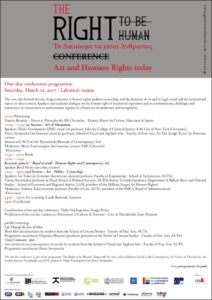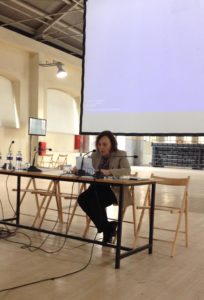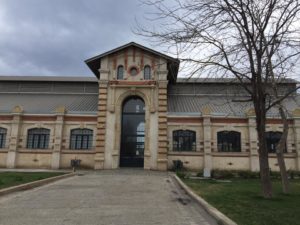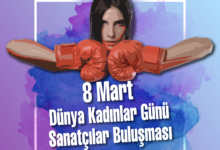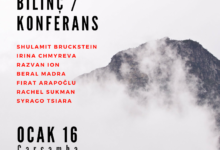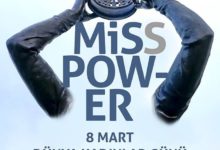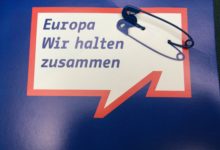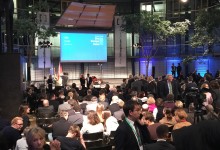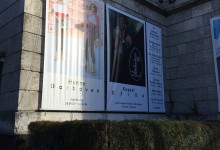One day conference: Art and Human Rights Today – cact
MY CONTRIBUTION AS KEYNOTE SPEAKER TO THE CONFERENCE
HUMAN RIGHTS AND ART BASED ON TRUTH
In the age of a potential transformation of truth, it is a difficult task to present ideas and statements on a subject such as Human Rights, which is unanimously taken to be based on a absolute universal truth. In contrast, thinking and talking about Art has always been a negotiation with truth.
When searching for a definition of Human Rights this is what we quickly find:
“Born out of the atrocities and enormous loss of life during World War II, the United Nations Universal Declaration of Human Rights was signed in 1948 to provide a common understanding of what everyone’s rights are. It forms the basis for a world built on freedom, justice and peace.”
After 70 years, we are still struggling to reach this very simple goal of “a world built on freedom, justice, peace, and truth”.
I am deliberately adding truth to the sequence here, as Post-truth is now a popular term to describe the current paradoxal state of human condition, epistemology and ontology on this planet.
Post-truth is believed to be the not- so- innocent modification of the meaning of truth. It is claimed that truth is not only fabricated, or manipulated, but is designated as of minor importance for humankind. The purpose of capturing the political power, indicated as the main motivation of behind Post-truth. This network of political power, it is argued, aims to create an untruthful or ‘alternative’ view of the world, not necessarily to convince the elites, or even the voters but to blur judgments in general, to fortify reinforce hollow prejudices and to provoke kitschy feelings.
The news sources manipulated by political powers and their associates also contribute to a confusing domain of information in which deceptions, false stories, and gossip can spread with disturbing speed. Lies not- so- innocently shared in social media within a network quickly take on the quality of truth and create a global-effect of deception.
All basic merits of utopianic Modernism such as Human Rights, freedom of expression and creativity, free press and media, social media are now very ambiguous issues particularly in my homeland and the related cultural region.
To quote from Hannah Arendt: “ Truthfulness has never been counted among the political virtues, and lies have always been regarded as justifiable tools in political dealings.” (*)
Arendt writes that what distinguishes democratic from authoritarian regimes is not the greater honesty of democratic politicians. The saving grace of democracies is the existence of neutral, politically-independent institutions capable of safeguarding truth from the politics of prevarication.
In this spirit, I would like to propose that Art is also a safeguard for truth.
There is no doubt that the artists, and we, the curators and art critics believe that contemporary art production and its system of dissemination through exhibitions is the one of the most crucial means of engaging with socio-political-cultural issues, fault lines, and concerns and one of the most challenging ways of communicating with the people who are under the assault of Post-truth apparatus.
Consequently, as artists, curators, and art critics, I believe that in the inquisitive and cutting-edge truth-seeking quality contemporary art works have their capacity to enter into this Post- truth turmoil without any reserves, and to spoil the game of the Post- truth producers.
In this context, I would like to highlight that it is not a coincidence that, since two decades, the cities— rather than the capitals or the megalopoles—have become more ambitious of producing biennales is also has its reasoning in this context. Setting aside for a moment the economic-touristic benefits—which are real and needs to be taken into account, I would like to invite to concentrate on the provocative meaning of “exhibition”, namely submitting critical thinking through art works for inspection or examination by the public, putting a verbal, visual, or tangible production on the scene, challenging a confrontation with public opinion, and creating a complex agora to provoke the participation of an otherwise passive public into the debate. Exhibitions are willingly exposed to the adverse gaze of the public and to the manipulativ power interventions of the political or social orders. Yet, we again believe that the exhibition is also an intervention and vector of force power itself.
It is this seduction of power-game that makes the biennale desirable.
The role of the artist and the curator in a biennale at a time of social polarization, political upset, ecological catastrophe and all kinds of pressure and adversity is to respond to these vectors by introducing multifarious ways through which the selected artworks that can provoke new possibilities of critical thinking and promotes the quest for truth.
We are living in a region of civilizations that made the World we live with an unprecedented heritage, a realm of utmost creativity, thought and wisdom.
Yet, the same region which carried all the benefits but also all the vice and burdens of 20th century politics and economics, which enjoyed but also suffered under Modernist utopias and Post-modern phantasies, and , brutally transformed under Colonialism, Imperialism, Liberalism, Communism and Capitalism.
Words can neither describe the magnificence of its nature and monuments, nor define the disasters and interrupted lives and war, as it exists on this region.
Currently everyday we wake up to a tragedy. Our hearts are crying with tears of blood for those who are suffering as refugees and victims of, war and violence.
Once the Anatolian peninsula was called Asia Minor that is an organic part of Asia, protruding out of it and intruding into the continent Europe. On the intersection, Istanbul (Constantinopolis) is eternally bestowed and condemned to be divided into the West and the East. I am living and working in this city.
Since half a century I am living through a contradictory political-social- economic structures. In the middle of the century, I was born into a Modernized traditional society that had at that time one of the most ambitious utopias of 20th century. Until 1990s, it was called “the Third World” or “the periphery”.
But then, the winds of liberalism, socialism, communism, militarism, internationalism, nationalism, fundamentalism, McDonaldism, multiculturalism have swept over it. We ended up in post-peripheral flux of globalism, in a dystopia and a heterotopia. It was half a century of constructing and deconstructing, making and remaking.
As an art critic/ curator living within this content, in communication and collaboration with numerous artists and colleagues, I have tried to deconstruct the complex mechanism of peripheral Modernism and reconstruct an art system based on free and independent creativity, interactive exchange of thoughts and concepts and on collaborative projects with international fellow critics and curators.
Fortunately this process was supported by the then current discourses with their positive impacts on the art theory of the late 1980’s and 1990’s.
The outcome of the efforts of art people in the region is Athens, Istanbul, Thessaloniki, Çanakkale, Sinop, Mardin, Bucharest Biennales. The One common aspect of these biennales is the uniqueness of these cities. These cities embody the end of century dystopia/heterotopia and Neo-topia that seems to be an extreme fertile field for artistic creativity. The interest of the global intellectuals, artists and art investors are attracted to these cities. The question is how are we going to use this heritage to reconstruct interactive, interdisciplinary art events and art appreciations that can transcend and subvert the manipulations of Post-truth regime?
Because of the nature of globalisation and its impact on consciousness regarding human rights and because of the dissemination of a universal ethics of human rights, there is a strong cultural correctness on the level of intellectual and creative production. This has also created the consciousness of civil society with its public and private infrastructures in the form of institutions or NGO’s and civil initiatives, which have been acting as a membrane as well as a transmitter between the political and economic powers and the society and individuals. In order to resist this new era of paradoxes, of any sorts we have to learn to utilize these already existing tools.
As a citizen of Turkey, born in 1942, I regret to say that I am yet to experience “democracy” in its possible and effective form. July 15, 2016 is the fourth time that I lived through a military coup; that also, like the others, will shape the future of Turkey and the lives of next generations.
Secularism within the Modernist paradigm established by Republican units led by Atatürk and all the subsequent attempts of having an updated, more democratic, open, egalitarian constitution throughout 90 years has somehow failed and human rights, freedom of press, and expression are now noticeably broken.
There is a lot to be discussed in that “somehow” and no doubt a lot of room for self-criticism for progressive forces in our society.
Now, we are witnessing a strong polarization between seculars and religious people, racism threatening a convivial coexistence between ethnic identities and minorities. Behind this multi-polarization I can see the frightening inequality of income and opportunities. On the other hand, the consumption system is forcing these people to consume; the spectacle system is injecting non-satisfiable false dreams. The ruling power has promised to fulfil the needs and dreams of the conservative rural and urban middle classes by introducing religion as the background for their promised and potential welfare.
For the freedom of expression and opposition, the most effective cultural production in Turkey is the 200- year old Modernist, Post- Modernist and Relational Aesthetic production due to the excellent socio-political, critical and dissident artists. Their internationally recognized works have accumulated a significant heritage of contemporary art that cannot disappear overnight. This heritage is not only representing the state of affairs of these 50 years of struggle for EU democracy standards, but it has also became an informal model for South Caucasus, Middle-East and East Mediterranean contemporary art production and networking. I hope that all this energy and effort will be sustainable, no doubt with the solidarity of our neighbours, EU friends and institutions.
However, at present we have to be very alert about the limitations of all kinds of human rights, not only of freedom of artistic expression. Journalists, academics and state employed theatre actors/actresses – obviously without any reasonable cause – can now be the next target group by the political power.
Currently we might have a stagnant and less-active period in front of us. Looking back to these 50 years I can say that artists and curators had gained a strong experience in creating new strategies and methods to by-pass the possible threats coming from the conservative and oppressive circles. Even if the private sector investment in contemporary art (private museums in Istanbul, Istanbul Biennale, Sinopale, Çanakkale and Mardin Biennale) is a must for the global capitalist image of Turkey and cannot be ignored by the ruling politicians and economic team there is no secure ground for a trouble-free production of contemporary art or other creative activities.
Thus I have experienced a sudden attack to the realization of the 5th Çanakkale Biennale.
Çanakkale Biennial (www.canakkalebienali.com) is the outcome of the creative and positive energy of the city and its inhabitants. The civil NGO CABININ is determined to stay in the global mainstream contemporary art by improving the artistic content and aesthetic language of the Biennial. The Biennale is mainly funded by the Municipality and local NGO’s as well as all international culture institutions (countries of invited artists) which are active in Turkey.
To our regret, on September 4, the ruling party AKP Çanakkale members – alerted by a contemporary artist’s denouncing tweets – have released a press-release addressing the Mayor of Çanakkale, who is representing the main opposition party, CHP.
The accusations and defamations were, in part, fabricated towards the goal to seize the Municipality and, in part, to contribute towards the overall marginalization of progressive forces for freedom of speech and the suppression of questioning of the dominant monolithic nationalist discourses—the theme of the Biennial was “Heimat”. Furthermore, the fact that the Biennial, in its previous editions, was a platform for exploring Turkey’s history in relation to Greeks, Armenians, Kurds and other “others” of the official discourse.
We were not able to realize this biennale, but we will continue our quest of establishing a secure ground for contemporary art and culture production. Artists and art experts can find many ways and strategies to come out of this obscurity.
With my gratitude to my colleagues in Thessaloniki I hope that all our EU colleagues will strengthen their collaboration and solidarity and our achievements for “human rights and art” will continue.
*http://www.nybooks.com/articles/1971/11/18/lying-in-politics- reflections-on-the-pentagon-pape/

